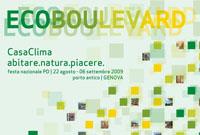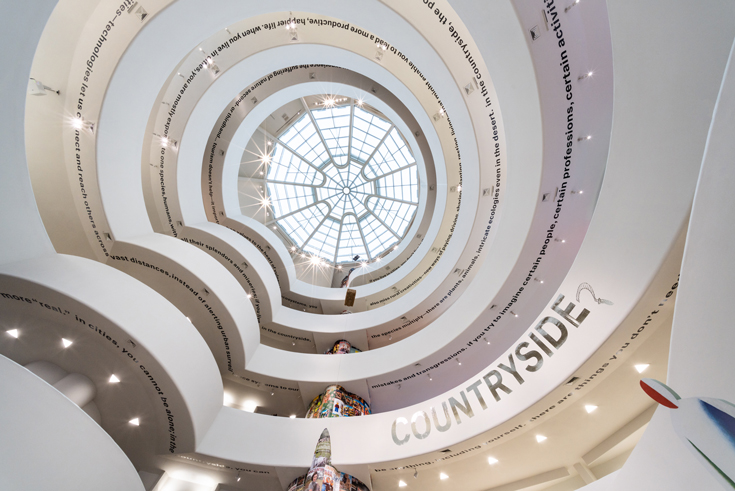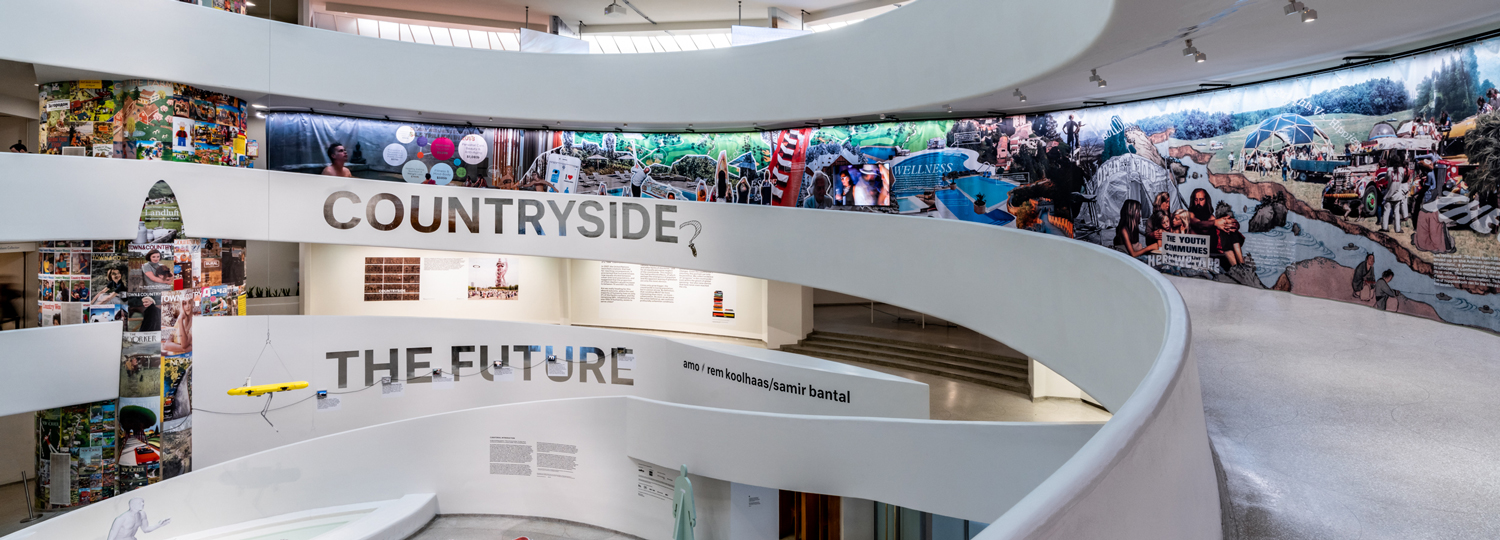Where have all the cows gone? The “Countryside, The Future” Exhibition

“Where did the cows go? And when did they leave?” (Rem Koolhaas)
Rem Koolhaas, a founding partner of the OMA (Office for Metropolitan Architecture) architecture studio, spent many decades preoccupied with the city. When he realized that the cows were disappearing from the Swiss countryside as the population was decreasing and the number of new buildings was increasing, he redirected his focus.
Koolhaas researched with OMA’s think tank, AMO, under the directorship of Samir Bantal and in collaboration with scientists, researchers, the Harvard School of Design and architecture critic Niklas Maak. The curator, Troy Conrad Therrien, ultimately took the project to the Guggenheim Museum.
According to Rem Koolhaas’ arguments, we presume that any future potential for development will tend to arise in the city, which is why rural areas are “overlooked”. Without anyone noticing, the land of “peace and pleasure” has been transformed into a bizarre, undesigned back room. This “storage room for the cities of the world” has now been brought to the Guggenheim Museum by Rem Koolhaas. The result of five years of contemplation opens the exhibition: a wall-filling flood of questions. Booklets, sources and theses lie on a nearby table.
A world map with certain regions marked illustrates the concept behind the exhibition: Only 2% of the earth’s surface is urban; the other 98% are defined as Countryside within the framework of the show. It is possible to understand and describe individual cities, but the Countryside cannot be understood or documented in the same way. This is where the discrepancy of the project becomes clear: Is it possible to draw an objective picture of 98% of the world?
“This is not an art show.” (Rem Koolhaas)
The exhibition was conceived as a collection of zoom images depicting areas, phenomena and agents around the world. The focus lies strictly on anthropogenic changes. Natural phenomena such as the Himalayas and the rain forest have been omitted. What is presented is an assemblage of familiar and unfamiliar topics. Despite their local isolation, some of the highly specific projects are meant to act as examples of global trends in the areas of energy and food production, digital progress and climate change. Alarming graphs underscore bizarre images of post-human server farms and pixel farming, of melting permafrost, of gorilla habitats and milk factories in the desert.
“How should we think about Earth?” (Rem Koolhaas)
The spectrum of the “new Countryside” is broadly presented and provokes new question marks. A 350-page catalogue in pocketbook format reinforces the profundity of the examination. The exhibition functions like a larger-than-life collage: New relationships and connection lines are created through the visual linking of seemingly disparate content. A space is created that invites visitors to engage in discussion and remains open to myriad interpretations. The Countryside exhibition definitely encourages us to question the urban comfort zone and its consequences.


